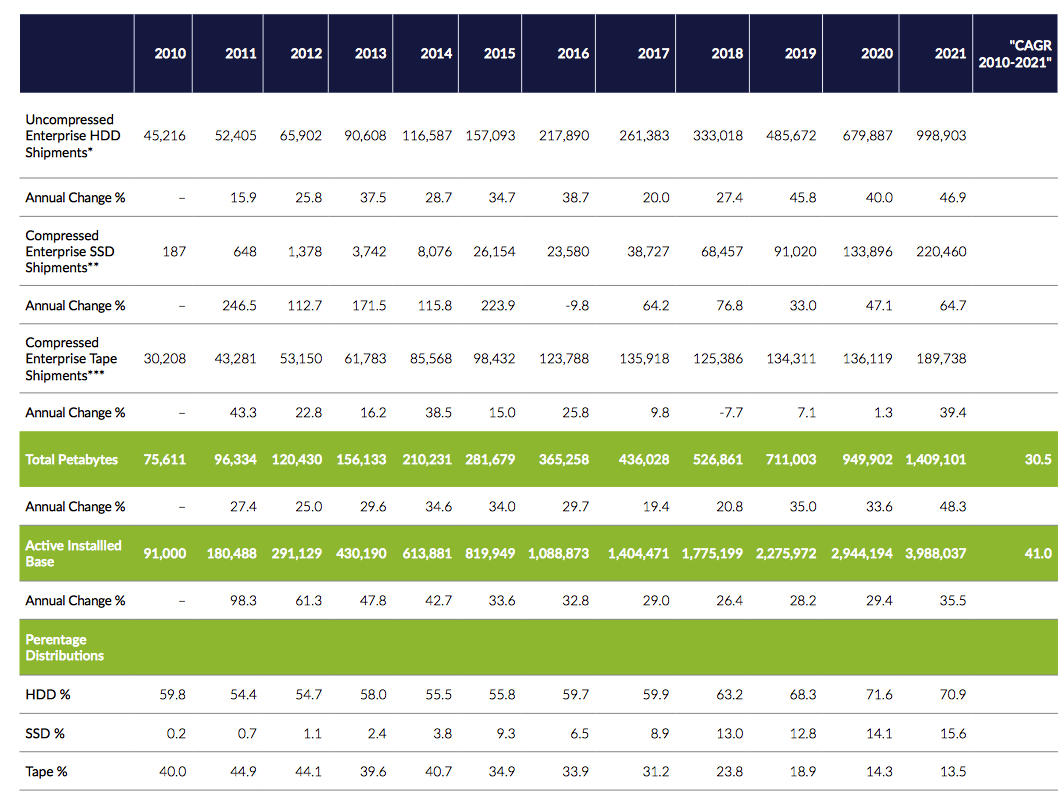Sizing Future DNA Storage Market, White Paper from Furthur Market Research on Twist Bioscience
Highlighting need for new enterprise storage technologies that can be deployed more cost effectively at massive scale with minimal power consumption, such as DNA storage
This is a Press Release edited by StorageNewsletter.com on August 11, 2022 at 3:11 pmTwist Bioscience Corp. shared a white paper from Furthur Market Research LLC(1) highlighting the need for new enterprise storage technologies that can be deployed more cost effectively at massive scale with minimal power consumption, such as DNA data storage.
“We estimated the maximum production capabilities of current storage technologies (HDD, SSD, tape) and concluded that potential demand at growth rates greater than 25% annually would exceed available supply of all enterprise-grade media,” said John Monroe, founder, Furthur Market Research and lead author of the paper. “Importantly, moving beyond 2025, new DNA, optical and perhaps other enterprise storage technologies will be needed to cost-effectively and reliably preserve the priceless artifacts of our personal, corporate and cultural history.”
Storage capacity today, not available tomorrow: Zone of potential insufficiency
To date, enterprise storage capacity continues to be available, but the data shows that at current and projected growth rates, there likely will be zones of potential insufficiency where the predicted storage capacity cannot meet the storage demand.
This white paper confirms that in 2019, 2020 and 2021, shipments of enterprise petabytes accelerated and grew by 35%, 33.6% and 48.3%, respectively.
Estimates show that:
- Assuming a 35% annual growth rate in enterprise storage demand, during 2030 the zone of potential insufficiency could be 7.9 million PB (7.9ZB).
- Assuming a 45% annual growth rate, the zone of potential insufficiency during 2030 could exceed 25 million PB (25ZB).
Shipments of Enterprise HDD, SSD and Tape Petabytes

Archival (cold) data volume could be ~75% of installed base of enterprise data, remain undeleted
Several industry interviews with industry executives responsible for more than 100PB storage infrastructures in diverse markets said their data retention times were ‘indefinite.’ The author notes that, to date, we have seen little or no inclination of any kind in any corporation to delete any data, and there is no reason to believe this trend will change.
- Approximately 75% of the active installed base of enterprise storage could be ‘cold,’ mostly containing ‘Just In Case’ (JIC) or WORN (Write Once Read Never) data.
- Cold storage data may never be accessed at all, nor in most cases will it ever be deleted
“DNA holds the promise of offering the magic three in storage: ultra-high-density, reasonable cost, and sustainability. We expect that new media will be needed to address the $7 billion+ of unmet storage demand projected in the years ahead, and we remain at the forefront of innovation in this market looking toward introducing the first commercial DNA data storage solution in the near future,” commented Emily M. Leproust, Ph.D., CEO and co-founder, Twist Bioscience.
Expanding power requirements for current storage solutions: Sustainability considerations
The report notes new storage technologies must be more sustainable as the world’s appetite for data increases.
Leproust continued: “Today, the vast majority of enterprise data is stored on hard disk drives, which use a tremendous amount of power. As we prepare for the rapidly growing demand for storage, any new media must reduce the power consumption by one to 2 orders of magnitude. DNA is poised to do just that.”
Resource:
The Escalating Challenge of Preserving Enterprise Data
(1) White paper jointly sponsored by FujiFilm Corp. and Twist Bioscience Corp.













 Subscribe to our free daily newsletter
Subscribe to our free daily newsletter

